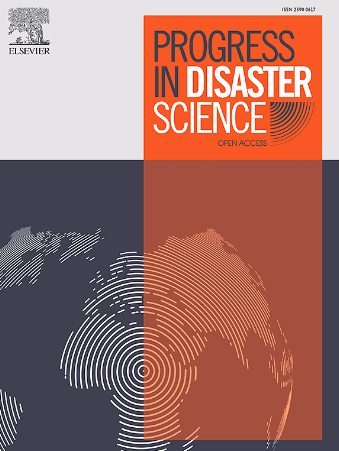Drought vulnerability assessment and mitigation strategies for peri-urban province of Pathum Thani, Thailand
IF 2.6
Q3 ENVIRONMENTAL SCIENCES
引用次数: 0
Abstract
This study assesses the drought vulnerability of Thailand's peri-urban province of Pathum Thani using a three-component vulnerability assessment framework, comprising drought exposure, drought sensitivity, and drought adaptive capacity components. Pathum Thani province, consisting of seven administrative districts, is home to a number of industries including agriculture, manufacturing, and tourism. Rapid urbanization and climate change have exacerbated the province's drought situations. To assess the drought vulnerability of Pathum Thani, drought vulnerability indicators structured around the three vulnerability components are developed across the three sustainability dimensions: social, economic, and environmental dimensions. The drought vulnerability indicators are initially evaluated by experts for their relevancy. The drought indicators are further evaluated using a questionnaire administered to randomly selected households across seven administrative districts. The drought vulnerability components and indicators, based on the questionnaire responses, are subsequently validated by using structural equation modeling and confirmatory factor analysis. After the validation, a drought vulnerability questionnaire is developed to evaluate the drought vulnerability of the study area, measured by the province- and district-level drought vulnerability indexes. The research findings reveal a moderate level of drought vulnerability across most administrative districts. As a result, policymakers should focus interventions and mitigation strategies on reducing drought exposure, cultivating drought resilience, and enhancing adaptive capacity.
泰国巴吞他尼省城郊地区干旱脆弱性评估和缓解战略
本研究采用三要素脆弱性评估框架,包括干旱暴露、干旱敏感性和干旱适应能力,对泰国巴吞他尼省的干旱脆弱性进行了评估。巴吞他尼省由七个行政区组成,是农业、制造业和旅游业等众多产业的所在地。快速的城市化和气候变化加剧了该省的干旱状况。为了评估Pathum Thani的干旱脆弱性,围绕三个脆弱性组成部分构建了干旱脆弱性指标,涵盖了三个可持续性维度:社会、经济和环境维度。干旱脆弱性指标由专家初步评估其相关性。通过对七个行政区域随机选择的家庭进行问卷调查,进一步评估了干旱指标。基于问卷调查结果,采用结构方程模型和验证性因子分析对干旱易损性成分和指标进行验证。验证后,编制干旱易损性问卷,采用省级和区级干旱易损性指数对研究区干旱易损性进行评价。研究结果显示,大多数行政区域的干旱脆弱性处于中等水平。因此,决策者应将干预措施和缓解战略的重点放在减少干旱暴露、培养抗旱能力和增强适应能力上。
本文章由计算机程序翻译,如有差异,请以英文原文为准。
求助全文
约1分钟内获得全文
求助全文
来源期刊

Progress in Disaster Science
Social Sciences-Safety Research
CiteScore
14.60
自引率
3.20%
发文量
51
审稿时长
12 weeks
期刊介绍:
Progress in Disaster Science is a Gold Open Access journal focusing on integrating research and policy in disaster research, and publishes original research papers and invited viewpoint articles on disaster risk reduction; response; emergency management and recovery.
A key part of the Journal's Publication output will see key experts invited to assess and comment on the current trends in disaster research, as well as highlight key papers.
 求助内容:
求助内容: 应助结果提醒方式:
应助结果提醒方式:


